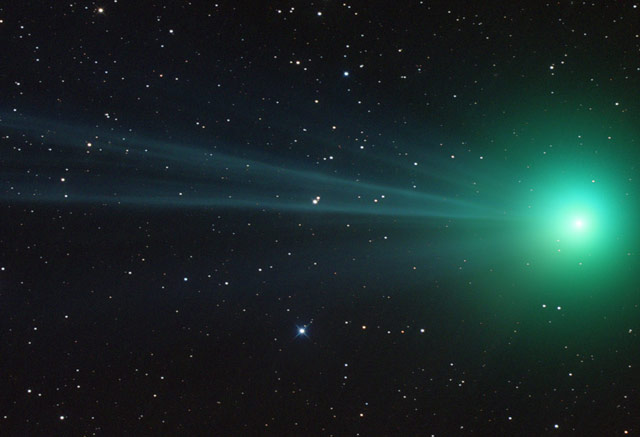Hi everybody!
Here's the latest article from the Astronomy site at BellaOnline.com.
What's in a Name
Things aren't always what they seem. Many discoveries aren't named for – or by – their discoverers. Halley didn't discover Comet Halley. Kuiper said the Kuiper Belt didn't exist. The Herschels called Uranus "the Georgian planet" after George III of England, but no one else did.
http://www.bellaonline.com/articles/art23216.asp
*Small bodies far and near*
On June 27, 1997 the NEAR-Shoemaker probe flew by asteroid Mathilde and collected data and pictures. The robotic probe was designed to study the asteroid Eros for a year, which it went on to do in 2000. In February 2001 it landed on Eros to complete the mission. The probe was called Shoemaker after the great planetary scientist and comet-hunter Eugene Shoemaker who died in a car accident not long after the launch.
We are interested in such small bodies for their help in understanding how the Solar System was formed. We're also interested in them because occasionally they are in orbits that cross ours. This week on June 27, Asteroid 2011 MD went past Earth at 12,300 km (7640 miles) above the South Atlantic. That's a pretty safe distance and well above the International Space Station. However it was lower than our geosynchronous satellites. In size it was about the length of a school bus and some 5 – 20 meters across.
On Jun 30, 1908 the Tunguska event occurred. This was probably caused by a large meteor or comet. Rather than hitting the ground, it is thought to have broken up explosively in the atmosphere several miles up. The shock wave flattened 2150 square kilometres (830 sq mi) of trees. This would be very bad news over a densely-populated area.
On July 2, 1985 the European Space Agency (ESA) launched the probe Giotto to study Comet Halley as it came on one of its rare visits.
*Eclipses*
Last week I included a link to the beautiful midnight solar eclipse taken in Norway by Bjornar G. Hansen on June 1 this year. A solar eclipse occurs during the time of the new moon and is followed by a lunar eclipse at the time of the full moon. Here is a link to a spectacular composite of the lunar eclipse taken by Greek Astronomer Elias Politis over the Acropolis in Athens. http://apod.nasa.gov/apod/ap110625.html You can also see it as a time lapse video at http://www.youtube.com/watch?v=kOXR1ga1UlE. Although the video lasts only 48 seconds, the eclipse itself was a long one with totality lasting 100 minutes.
That's all for now. Wishing you clear skies.
Please visit astronomy.bellaonline.com for even more great content about Astronomy.
To participate in online discussions, this site has a community forum all about Astronomy located here -
http://forums.bellaonline.com/ubbthreads.php?ubb=postlist&Board=323
I hope to hear from you sometime soon, either in the forum or in response to this email message. I welcome your feedback!
Do pass this message along to family and friends who might also be interested. Remember it's free and without obligation.
Mona Evans,
Astronomy EditorBellaOnline
.
astronomy Newsletter








